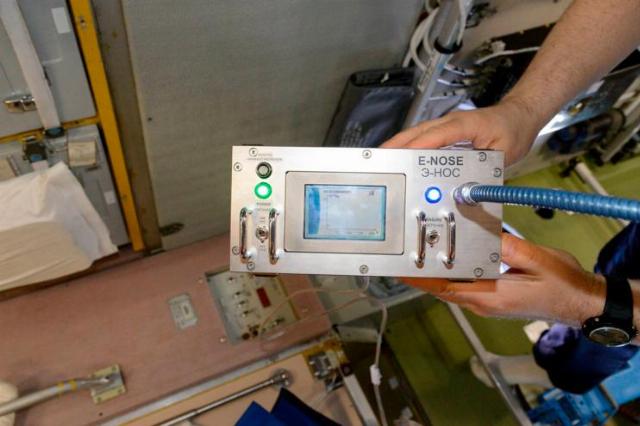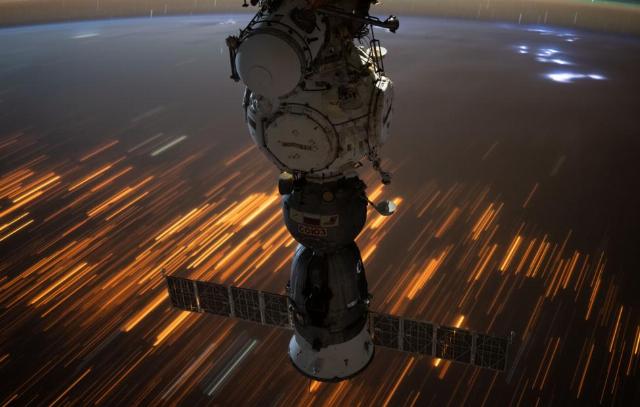Oleg Kononenko — about the research that is being conducted on the ISS
The International Space Station (ISS) is a living organism that needs to breathe, drink, eat and get rid of excess every day. How can these needs be met in conditions of remoteness from terrestrial resources? The high cost and complexity of delivery make it even more difficult to solve the problem. Modern space biotechnologies are coming to the rescue.
Does it sound cosmic? Yes, but space exploration is not always about distant galaxies, Mars rovers and the search for traces of extraterrestrial life. Space is also an extreme laboratory in which, under the conditions of severe limitations of space, water, air and energy, astronauts are looking for solutions to the most pressing problems of life support in orbit.
Many biotechnological experiments are being conducted on the Russian segment of the ISS, the results of which are likely to serve humanity on Earth as well, because today we are already facing global challenges of a growing population, resource depletion, and climate change. The experiments "Separation", "Photobioreactor", "Electronic nose", "Photocatalysis", "Test" and "Toxicity" are aimed at ensuring the basic needs of the body in air, water and safety.
Water from space: the Separation space experiment
Let's start with the foundation of life — water. For long-term space missions, it is necessary to create a closed water regeneration system. The solution to this problem is based on the Separation space experiment, a test of the SRV—U system, which is fundamentally new for the ISS (a system for regenerating water from urine).
In a distiller, a rapidly rotating device, urine is distributed by centrifugal force over the walls of a thin film, which accelerates evaporation. A reduced pressure is created inside the distiller, which significantly reduces the boiling point of the water and saves energy. The heat generated by steam condensation is used to heat and evaporate a new portion of urine.
After additional purification, such water is suitable for drinking and cooking. To date, the system has produced more than 200 liters of clean water. This development can be used to create autonomous water supply systems on the Ground in conditions of limited access to clean water, for example, at Arctic scientific stations or in deserts.
"Toxicity": live detectors of unknown threats
Having solved the problem of water regeneration on the ISS, scientists face another challenge: how to determine its quality? For this purpose, the station uses chemical analysis, which detects only known pollutants. Its key drawback is the inability to detect an unknown toxic substance or a dangerous combination of several components, which is unacceptable for long-term interplanetary missions. The solution to the problem was the "Toxicity" experiment based on the Biotox-10K device, which uses a microbial biosensor — living luminous bacteria - as an indicator of purity.
In an active and healthy state, the bacteria glow intensely. When microorganisms enter a toxic environment, their metabolism is disrupted, and the glow decreases sharply or disappears altogether. The dimmer the light, the higher the "toxicity index" and the more dangerous the water is. This method is called integral — it evaluates the overall harmfulness of the environment, rather than its individual components.
The "Toxicity" experiment was aimed at investigating the effectiveness of this technology in zero gravity. The astronauts measured water samples from the regeneration system and compared them with reference samples. All data was recorded by the device. Then some of the samples were sent back to Earth for analysis using the same method. The data obtained in orbit completely coincided with the "terrestrial" ones.
"Electronic nose": on guard of pathogens
Of course, the purity of the air astronauts breathe is no less important than the purity of the water they consume. Myriads of bacteria and microscopic fungi, including those conditionally pathogenic to humans, live in the seemingly sterile atmosphere of the ISS. Under stress and weakened immune systems, they can cause infections. By multiplying in filters and ventilation, microorganisms degrade air quality and the functioning of life support systems.
Until now, the main method of control has been manual sampling and then sending them to Earth. This process often took months, and astronauts needed an instant diagnostic tool right on board. A unique device came to the rescue — the "Electronic Nose", which is a gas sensor system based on artificial intelligence. Its task is to identify microbial contamination by volatile organic compounds that are released by bacteria and fungi in the process of vital activity.
 |
| An electronic nose. |
| Source: © NASA |
The work on the experiment was carried out in two stages. At the first stage, the device was "introduced" in the laboratory to the reference odors of the most common and dangerous inhabitants of the ISS. Thus, a database of "microbial flavors" was embedded in his memory. At the second stage, the "Electronic Nose" was tested for the ability to recognize microbes not in pure culture, but on real samples of materials.
Experiments have confirmed that the device can not only detect infection, but also determine its quantitative level. The data of the "Electronic Nose" coincided with the results of traditional laboratory analysis.
Photobioreactor: Space Garden
During the Photobioreactor experiment, microalgae are grown in zero gravity to produce oxygen and obtain an additional power source. Algae in the process of photosynthesis absorb carbon dioxide and release oxygen. And the food source, spirulina, is a natural superfood rich in easily digestible protein, vitamins and amino acids.
The Photobioreactor scientific equipment includes a "Bioplatform" (the main device), replaceable "Biomodules" (reactors where algae grow), a nutrient medium and a control system. It provides uniform illumination, nutrient supply and removal of gases generated. The results of the experiment will form the basis for the creation of a biotechnological module for ships of the future.
 |
| Photobioreactor. |
| Source: Ivan Wagner/ Roscosmos/ TASS |
Photocatalysis: UV protector
Several air purification systems are operating on the Russian segment of the ISS. However, they all have drawbacks: filters become clogged over time, becoming ineffective against pathogens and dust particles that enter the lungs of astronauts. For future long-duration missions, a more reliable and autonomous system is needed. The technology for such a system is being tested as part of the Photocatalysis experiment.
The technology is based on the process of photocatalytic mineralization, in which the filter does not clog, but destroys the "dirt" to harmless components. The system includes two elements: a photocatalyst, a special substance deposited on a porous quartz glass base, and a source of mild ultraviolet radiation, which activates the catalyst. When passing through a filter with a catalyst for the flow of air with organic pollutants, UV radiation affects it, destroying the bacteria, viruses, spores and toxic gases contained in it.
Photocatalysis will purify the air from the smallest and most dangerous pollutants — viruses and dust particles less than 20 micrometers in size, providing an almost sterile atmosphere. The crew will receive protection from allergens, toxins and pathogens, which is crucial for long-term flights. The results of the Photocatalysis experiment will form the basis for projects of life support systems for future Russian orbital stations and manned spacecraft of a new generation.
"Test": the invisible inhabitants of the station
For a long time, it was believed that outer space was sterile due to extreme temperatures and radiation. However, the experiment "Test" refuted this assumption. During spacewalks, cosmonauts took samples from under the screen-vacuum thermal insulation (EVTI), a shell that protects the station from overheating and hypothermia, and the analysis showed the presence of viable bacteria and traces of acids on the metal. Microorganisms from the inner surface of the station get outside through ventilation and survive for years under the protection of EVTI.
The concentration of volatile organic compounds, which create a nutrient medium for microbes, is hundreds of times higher under the skin than inside the ISS. This demonstrates that the main danger does not come from outer space, but from microorganisms and chemical traces of human activity. Control over these processes is a key condition for future space exploration.
The relationship of experiments
Bioregenerative life support is a key concept for long—duration space missions. The experiments "Separation" and "Photobioreactor" close two key chains for life — water and gas. The experiments "Electronic nose" and "Photocatalysis" work in tandem to "find and neutralize". The "Test" and "Toxicity" experiments increase the safety of the life support system by diagnosing the condition of the station's modules and the most important resource, water.
Oleg Kononenko, Commander of the detachment, Hero of the Russian Federation, former TASS special correspondent on the ISS, Deputy head of the Gagarin Cosmonaut Training Center
The editorial board's opinion may not coincide with the author's opinion. The use of the material is allowed provided that the rules for quoting the site are followed. tass.ru

